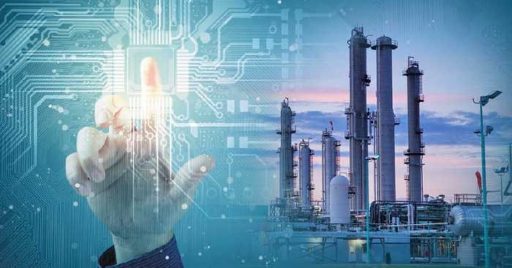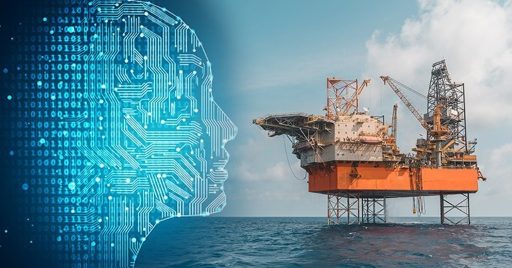Artificial intelligence is affecting oil rig safety in a rapid way. With advancements in machine learning, deep learning and massive amount of data that is becoming available, oil rigs are becoming a safer place. This is reassuring for work place safety and environment considering the historical rate of accidents and possibility of hazards that might lead to fatalities and damage to ecosystem.
In this article, we will have a look at how artificial intelligence is affecting oil rig safety to help managers have a better understanding of current industry trends and innovative HSE solutions that are available.
What artificial intelligence applications are taking place in oil rig safety?
In recent years more companies in oil and gas industry have started utilizing artificial intelligence in oil rig safety because the results are promising and the cost is reasonable in the long term.
One good example is the dutch Rolloos that use artificial intelligence and deep learning to improve workplace safety. The Red Zone System as they call it, runs offline due to the lack of internet connection on the rig. They started by using onboard cameras to capture 60 days actual data of everyday operations on the site at different circumstances. Then every person and object was annotated and was fed to the system so AI could learn from past experiences. Now, the algorithms are so trained that they can detect an object in 18 inch spaces under 250 milliseconds which is a critical achievement for a safety warning system. Every captured image or warming events that are taking place everyday are new training data for the system to learn so false positives and negatives are eliminated.
The international Seadril is another good example that deploys an intelligent safety system for drill floor red zone management and identify safety threats. This system works by sending out pulses of infrared light. The time it takes for the emitted pulse to come back measures the distance of nearby objects. The system is able to cover 360 degree of rig floor and generate 700,000 sensor readings per second. It means all workers and objects are supervised in real time for any possible safety risk or violation. For example entry to red zone by any personnel is considered a violation so alarms will go off notifying HSE managers. It can be further developed for collision detection of drilling equipment.

Even traditional oil companies such as BP are embracing AI for smarter safety in their oil rigs. They have built an AI center of excellence within the company while investing in startups to boost AI and digital capabilities in upstream offshore sites.
Saudi Aramco also is investing in a startup to develop next gen petroleum AI software. GE, Statoil, Shell, and Chevron are investing in AI as well.
There are also artificial intelligence companies who offer customized intelligence HSE solutions for oil rig safety. VEUNEX is such a good example that in short time has gained trust of oil and gas companies.

How artificial intelligence can optimize oil rig safety?
Oil rig safety is at risk of human error assuming the organization has perfect policies and procedures in place. That is why AI is being embraced globally since it can offer human-independent solutions. There are also equipment malfunctions that might lead to catastrophic accidents.
The use of artificial intelligence can detect both safety risks in following scenarios:
- AI and machine learning are capable of detecting PPE violations as it is one of the most important safety rules on oil rig.
- Workers should maintain correct posture and footing to prevent strains and injuries. AI can recognize and notify such mistakes.
- Access limit violation is easily detectable as face recognition and location definitions are already in the system. Rig floor red zone, rotary table, tong swing area, V-door, crane red zone, pipe rack and catwalk are not accessible at operations.
- Falling is a major risk specifically in monkey board. Recognizing a fallen person is easy for AI as it has learnt from training data what human posture is like in different positions.
- Dangerous behaviors such as smoking on rig floor or talking on mobile phones are prohibited that can be detected and notified by AI safety system.
- Poor house keeping is also detectable to prevent trips and falls because small tools left on the floor can cause big accidents and injuries.
- Object contact is another major cause of safety accidents on oil rigs as there are heavy duty drill pipes and equipments that can strike workers if proper distance is not maintained. AI-based HSE can predict and notify such possibilities on rig floor or pipe rack.
- Oil and drilling fluid leaks are main causes of explosion or chemical burns that can be detected long before damage has occurred.
- Early detection of smoke & fire is a big advantage of AI-powered HSE system that can save lives, environment and assets.
Conclusion
Artificial intelligence in oil rig safety is evolving rapidly and even traditional oil and gas companies are embracing next-gen technologies.
In such an unpredictable oil market that was hugely impacted at the beginning of COVID pandemic, competitive advantages such as artificial intelligence analytics are required to be immune to market shocks while remaining profitable even at lower oil prices.
With substantial amount of data available and autonomous capabilities rapidly growing, AI can optimize oil rig safety by detecting risks and violations in real time so managers can have peace of mind knowing their human resources are safe, the environment is protected and profits are secured.